Your cart is currently empty!
Case Study | myTEXT
App with chatbot as reading companion for delinquent teenagers
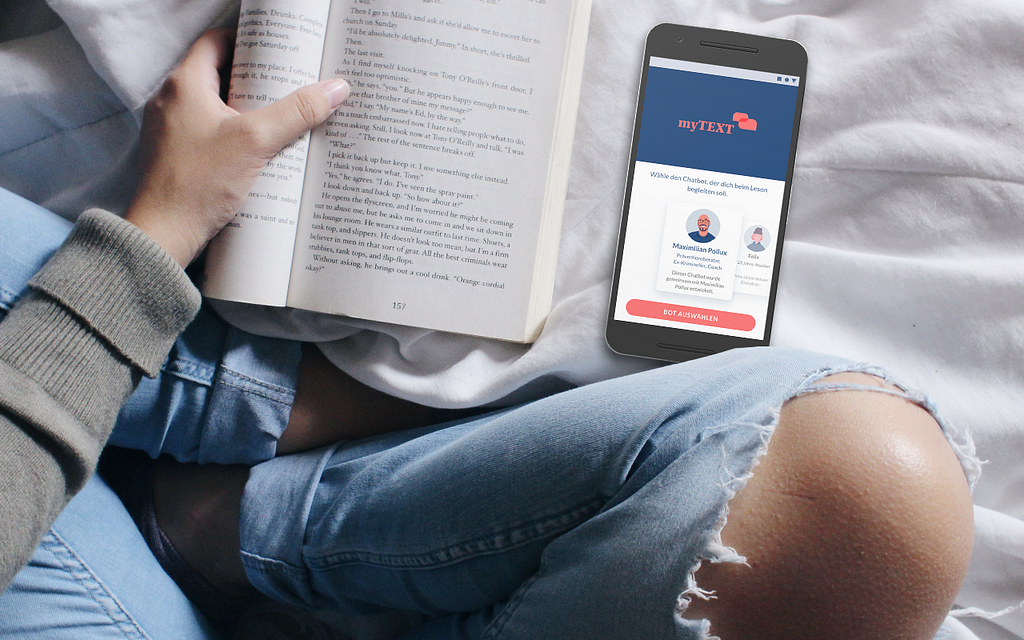
Overview
Time: September to December 2020
Tasks: User research, experience strategy, information architecture, interaction design
Tools: AdobeXD, Notion, Miro
Team:
- Martin — Product manager
- Ramona — Product Manager
- Christine — UX/UI Designer (LinkedIn)
Objective
How might we help teenagers finish their reading assignment with the least possible effort, while also igniting the joy of reading in them?
Context
In this project I worked for KonTEXT, a reading project for delinquent teenagers. Teens who are sentenced to reading a certain number of pages come to KonTEXT for supervision and guidance. They regularly meet with mentors who reflect with them on the book they read and on their lives. However, many teenagers struggle to finish their reading assignment. Therefore, KonTEXT wants to help the youths by giving them a reading companion on their phone in the shape of an Android app with a chatbot.

User Interviews
First, we needed to get to know our users to understand what was keeping them from finishing their reading assignments on time. So we conducted interviews with 6 people who had either recently finished their reading assignment or were still working on it.
We wanted to find out about the problems they had with reading, as well as strategies they used to master the challenge and things that motivated them.
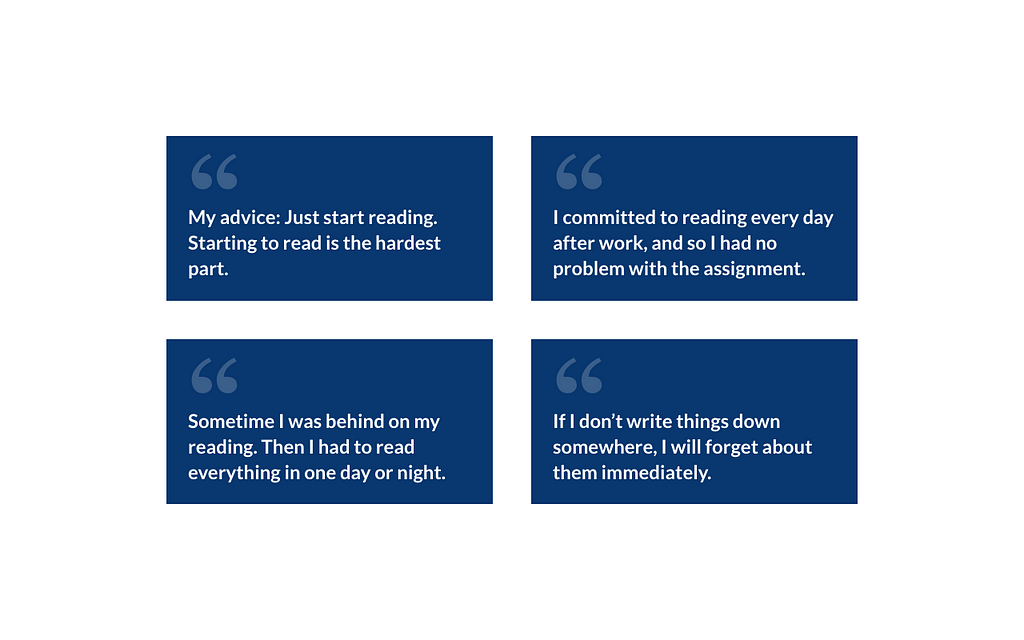
Main takeaways from user interviews
- 4 of 6 participants had no problems getting started with reading
- 5 of 6 made some kind of plan for reading (by defining a time in their day where they would read or by setting a goal of a certain number of pages per day)
- 3 of 6 said the motivation was not important, because they were forced to read and just had to accept it
Trending Bot Articles:
1. The Messenger Rules for European Facebook Pages Are Changing. Here’s What You Need to Know
3. Facebook acquires Kustomer: an end for chatbots businesses?
What helped these youths succeed was the fact that they actively organised their reading and that they accepted they had to do it. None of the youths we interviewed had major problems with reading, some of them even enjoyed reading in their free time before the assignment. We were surprised by that, because our team members who were also mentors for KonTEXT assured us that many of their mentees had grave problems.
Mentor Interviews
To understand if the teenagers we interviewed were just outliers, we wanted to talk to some youths who actually struggled with the program. But most of them were unwilling to speak to us, even when we offered a reward. The ones who agreed to meet with us didn’t show up for their appointments. So we decided to interview the mentors at KonTEXT instead.
From the results we could see that the youths we interviewed had not been representative of our user group. Most teenagers actually disliked reading and were not at all motivated.

We wanted to find out how many of the mentees had problems with reading, what kinds of problems they had and which strategies and tools they used to succeed.
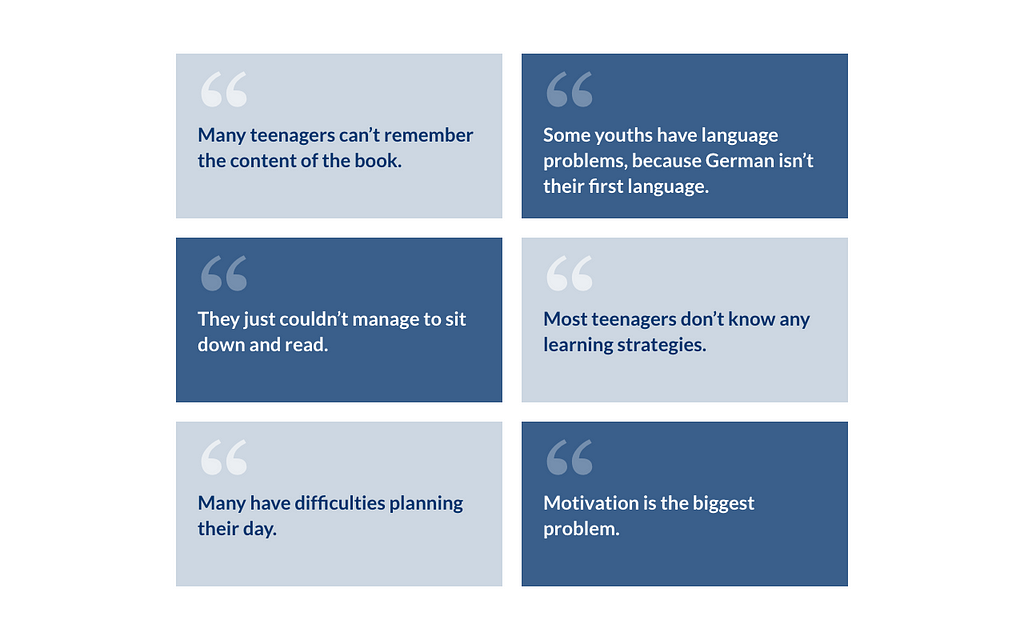
Main takeaways from mentor interviews
- Motivation is often named as the biggest problem: Reading is perceived as a punishment for their crimes and so they reject it
- Many teenagers lack the organisational skills to plan their day and their reading, which is exacerbated by stress
- Since only 25% of teenagers had big problems with the assignment, we would take into account the other user group as well: People that don’t struggle a lot, but could use some extra motivation and organisation tips
Personas
To put a face to our research results, I created personas for the two user groups. I wanted us to keep in mind the needs of users struggling with the reading assignment and those who were (mostly) taking it in stride.
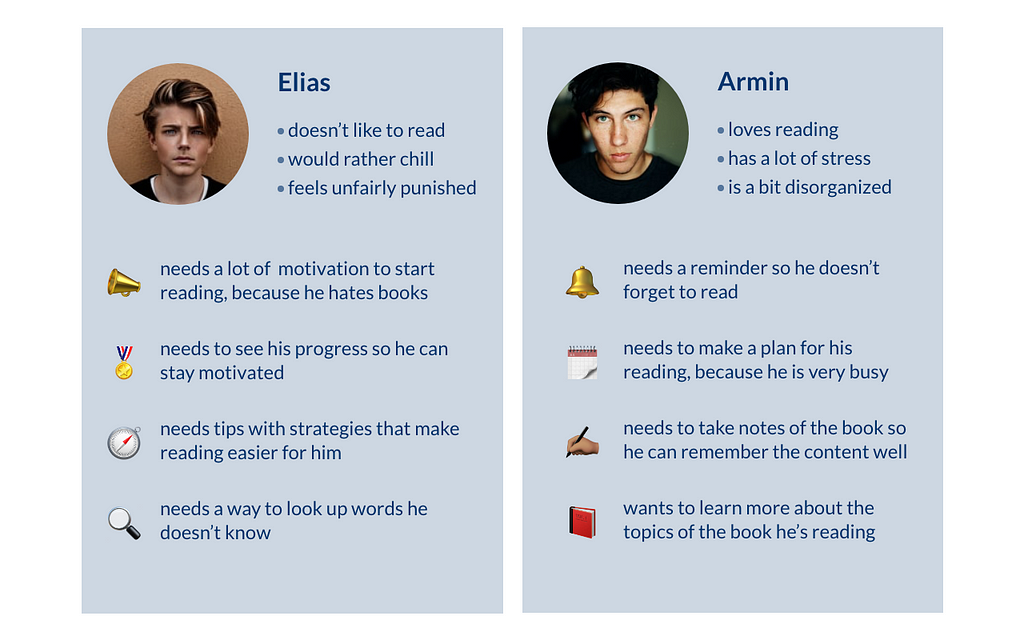
Main takeaways from personas
- Motivation: Users need to see their progress and get encouragement to stay motivated.
- Organization: Users need help with organizing their reading, so they can finish their assignment on time.
- Strategies: Users need tips to approach reading more strategically, so they can read effectively.
We understood that the app needed to give personalized tips to be helpful to both user groups. The level of support it offers needs to be adjustable. We decided to manage that in part with the chatbot, that would be able to give personalized advice.
Navigation and main features
We then utilized user stories, user flows and journey maps to define the features of the app.
The main features of the app would be:
- A chatbot that motivated users and gives tips
- Reading tools that provided aid while reading
- Statistics that help track the reading progress
- A reading plan to stay organised
- And an activities section that allowed users to dive deeper into the topics of their book

Reading plan
The initial idea for the reading plan was that it would inform users if they had read the required amount of pages each day. But in the usability test we discovered that all of our testers had a very different mental model of the reading plan. To them it was supposed to be a calendar that lets you plan your reading. They saw a planning tool, instead of a progress tracking tool, like we envisioned.
So we decided to change the reading plan to match our users’ mental model.

The new reading plan tells users when they have their next appointment with their mentor and how many pages they have yet to read until then. They can also set days in the calendar to be reading days by simply tapping them. The app automatically calculates how many pages they have to read per day to reach their goal.
Key takeaways
- Show users how many pages they have to read per day so they can divide their assignment into manageable portions
- Let users set a reminder for all reading days so they don’t forget to read and then have to read all the pages the day (or night) before their appointment
Chatbot
In the beginning, the chatbot mainly had the job of talking with the teenagers about their life and about the book they were reading as a peer. That changed a lot after the usability tests, where we asked our users for feedback on the chatbot.
Key takeaways from the usability tests
- User don’t want to be asked about personal things by the chatbot
- Users see the role of the chatbot as a mentor and guide, not as a friend
We redefined the role of the chatbot to be a coach for the teenagers. He is older than our users, so he is someone the teenager can look up to. The chatbot can give personalized reading tips, encourage and motivate the users and guide them through the app. The bot can also talk about his own experiences, because he is based on a real person.

We collaborated with a former criminal to create chatbot interactions based on his personality and experiences. The idea behind that is, that the teenagers can relate to these experiences and reflect on their own lives through them. In the future, the users will be able to choose between a handful of chatbots when they start using the app, and select the one they can best relate to.
Visual design
For the visual design of the app, we chose shades of blue to go with the strong brand color red. We made a style guide and component library and also started creating a design system to prepare for the coming development phase.

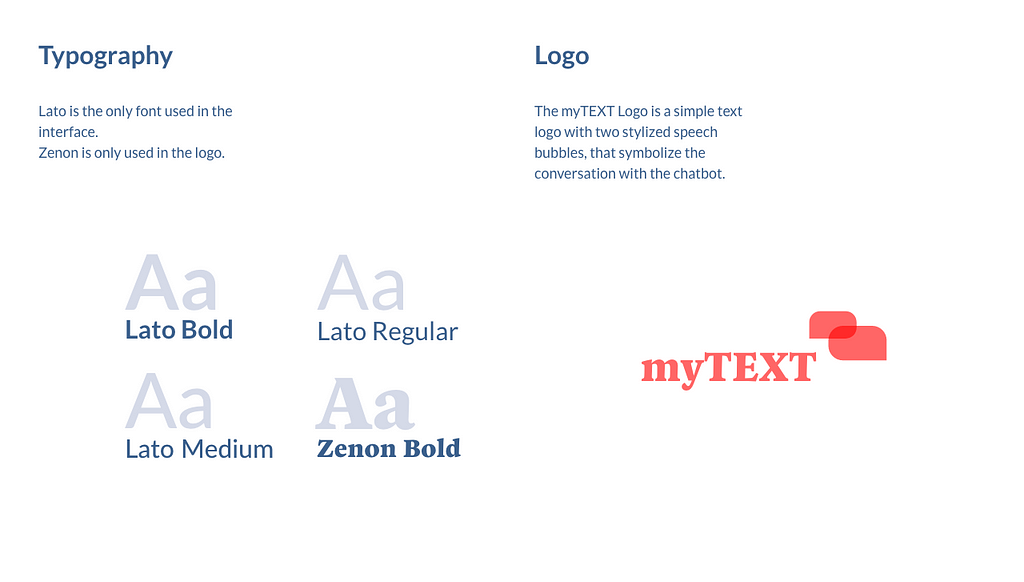
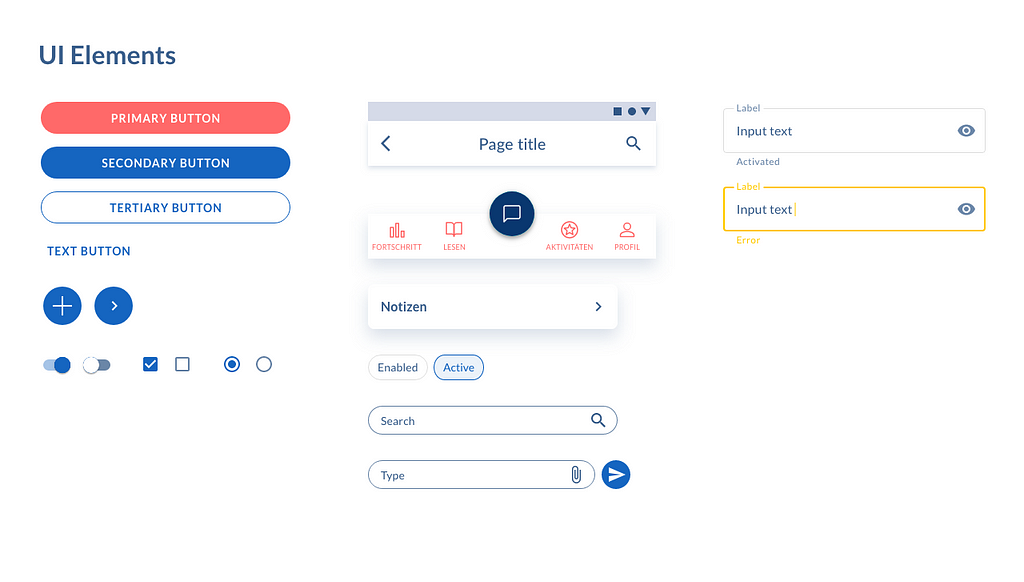

Retrospective
What worked well:
- Involving the whole design team in research (e.g. as note takers)
- Facilitating synthesis workshops for research with the design team
What I would do different:
- Involve team members outside of the design team
- Outline the strategy in the beginning of the process
What I would do next:
- Conduct another round of user testing to validate changes
- Define the MVP and bring in the devs
Thank you for reading through this case study!
You can find more of my work on my portfolio website stefaniemue.com.
Don’t forget to give us your 👏 !




Case Study | myTEXT was originally published in Chatbots Life on Medium, where people are continuing the conversation by highlighting and responding to this story.